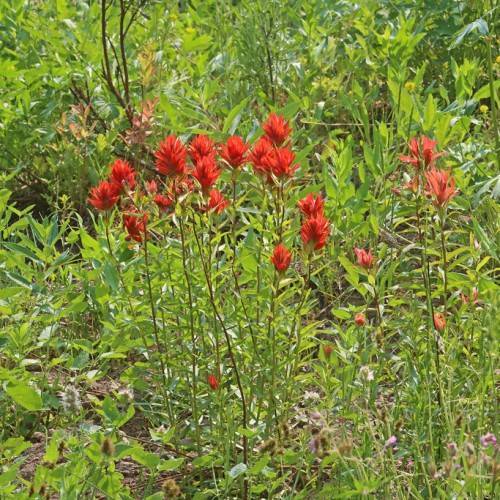
Giant Red Indian Paintbrush
Castilleja miniata var. miniata
Also Known As - Greater Red Indian PaintbrushWatering:
Average
Hardiness Zone:
Flowers:
Flowers
Sun:
Sun
Soil:
Clay, Sand
Growth Rate:
Low
Salt Tolerant:
Yes
Care Level:
Medium
watering
Golden Paintbrush prefers light, sandy soils and well drained conditions. It should be watered infrequently, approximately every 10-14 days during its growing season (May to October). The plant should be deeply watered until the soil is moist all the way through but not saturated. During the hot summer months water may need to be increased to once a week. Make sure not to overwater, as this can lead to root rot. During its dormant season (October to April), watering should be decreased to once every month or 2.
sunlight
The Golden Paintbrush requires full sun in order to thrive and bloom. It needs approximately 8 hours of sunlight per day. Although, this plant can tolerate light shade, it will not bloom as well if it receives 4-6 hours of sunlight per day. The sun should be strongest between 8am and 5pm during summer months. During cooler months, the sun should be at its strongest between 9am and 4pm. For optimal growth, the sunlight should be direct and unblocked by trees or other buildings.
pruning
Golden Paintbrush should generally be pruned in the spring, around April or early May. Pruning should reduce the height of the plant and prevent it from becoming too lanky or exhibiting a poor shape. Some pruning may also be beneficial to encourage more flowering later in the season. Any dead, damaged or diseased material should be removed and discarded. In addition, any overly long or wandering stems should be cut back to encourage bushier growth. Pruning should be done carefully and conservatively, as it can be very easy to damage the plant in the process. Generally, the goal should be to reduce the size and shape of the plant by up to a third of its existing size.
